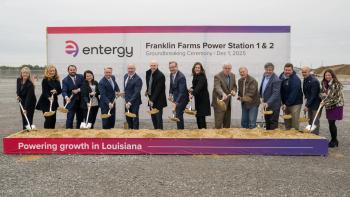
Oil, Natural Gas Production Begins at Chevron’s Anchor Project
The Anchor floating production unit (FPU) is an all-electric facility with electric motors and electronic controls to reduce carbon emissions.
Chevron Corp. started oil and natural gas production at its deepwater asset in the U.S. Gulf of Mexico—the Anchor project. The Anchor—a semi-submersible FPU—features a design capacity of 75,000 gross barrels of oil per day and 28 million gross cubic feet of natural gas per day. The site has reservoir depths up to 34,000 feet below sea-level, and production is aided by high-pressure technology rated up to 20,000 psi.
“The Anchor project represents a breakthrough for the energy industry,” said Nigel Hearne, Executive Vice President, Chevron Oil, Products & Gas. “Application of this deepwater technology allows us to unlock previously difficult-to-access resources and will enable similar deepwater high-pressure developments for the industry.”
Development includes seven subsea wells connected to the Anchor FPU, located in the Green Canyon approximately 140 miles offshore Louisiana, in water depths of about 5,000 feet. It is designed as an all-electric facility with electric motors and electronic controls to minimize carbon emissions. In addition, the FPU uses waste heat and vapor recovery units and existing pipelines to transport oil and natural gas to U.S. Gulf Coast markets. The site contains up to 440 million barrels of oil equivalent in estimated recoverable resources.
“This Anchor milestone demonstrates Chevron’s ability to safely deliver projects within budget in the Gulf of Mexico,” said Bruce Niemeyer, President of Chevron Americas Exploration & Production. “The Anchor project provides affordable, reliable, lower carbon intensity oil and natural gas to help meet energy demand, while boosting economic activity for Gulf Coast communities.”
Chevron News
In late April 2024,
Throughout the rest of 2024, TCO will start-up additional PBF compressors and convert the remaining metering stations from high pressure to low pressure in the oil gathering system. The last phase of TCO’s Tengiz expansion project is pacing for completion in the first half of 2025, allowing the company to increase Tengiz crude oil production by 12 mtpa—equivalent to 260,000 barrels per day.
Aside from the oil and gas market,
Newsletter
Power your knowledge with the latest in turbine technology, engineering advances, and energy solutions—subscribe to Turbomachinery International today.





